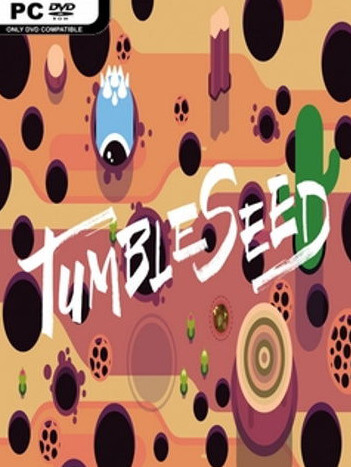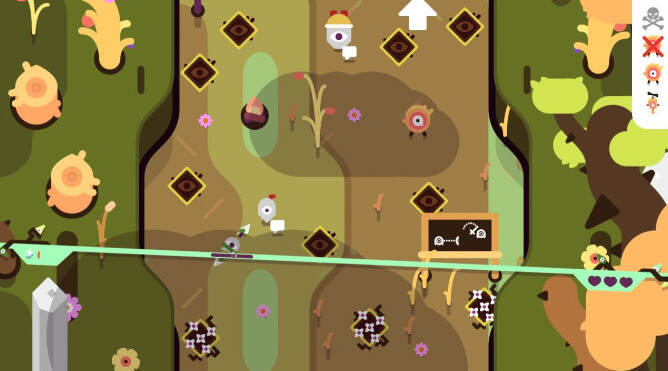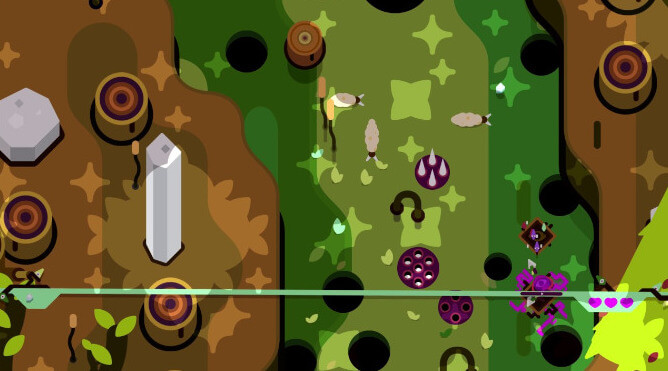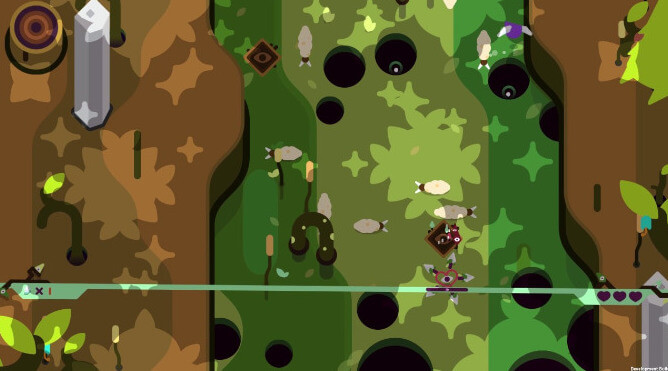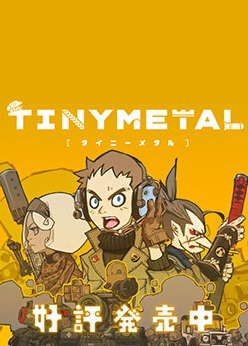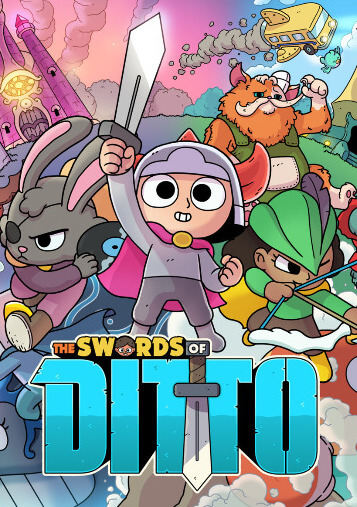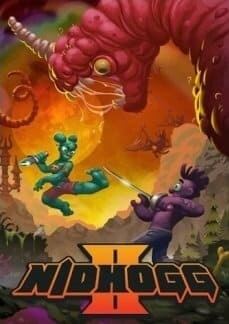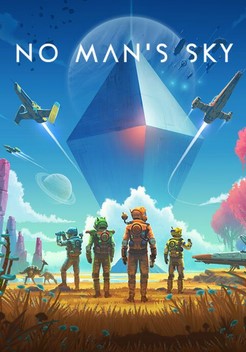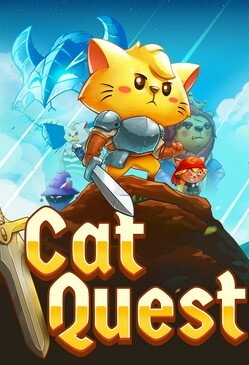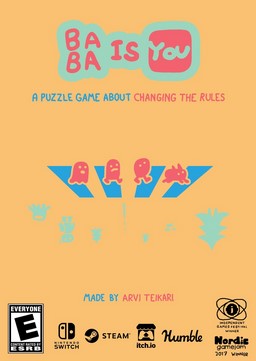While ascending the mountain, the player activates helpful power-up abilities by collecting and planting minerals in marked plots. While there are over 30 abilities in total, the player starts with the basic four: Flagseed creates an additional checkpoint (in lieu of regressing further down the mountain upon losing a heart), Heartseed creates additional hearts from minerals, and the Crystal ability generates minerals from multiple plots. Thornvine's single-use, protective thorny vine can hurt enemies if aligned correctly, though some enemies require more than one hit to die, and the player forfeits all thorns upon losing a heart. As the game progresses, the player collects additional abilities, such as Flailflower, which turns the seed into an anchor for a spiky flail, and Floodfruit, which fills surrounding holes with water for easy passage. Thus the player constantly weighs whether to use minerals offensively (to eliminate enemies), defensively (to bypass difficult sections), or at all.
After completing a portion of the mountain, the player reaches a basecamp intermezzo with multiple opportunities for collecting new abilities. The player can trade minerals for abilities in the store, and choose between two abilities to receive for free. The basecamp also contains minigames, such as a shooting range, a gambling device, and optional sidequests, which reward the player with shortcuts to later stages in subsequent playthroughs for completing challenges such as finishing a level within a time limit or without receiving damage.
Some enemies move in predictable patterns and others hunt the player. They range in resemblance from larvae and vultures to spiders. While ascending the mountain, the player passes through themed biomes, such as a forest, a desert, and snow, and each section of the mountain introduces new enemies that force the player to modify their strategy. TumbleSeed is depicted in a simple, colorful art style. Its characters are one-eyed, seed-shaped creatures who occasionally have hats. Their dialogue is visualized with speech bubbles, in text and emoji. Additionally, TumbleSeed includes other features including quests, leaderboards, and daily challenges.
The Four Peaks patch adds several elements to make the game friendlier, including training levels, a Weekly Challenge, and benefits that persist between playthroughs. The Battle Mode, exclusive to the Nintendo Switch release, is a King of the Hill-style mode for two players to compete to hold a set region for the longest.
Reception
The game received "generally favorable" reviews, according to video game review aggregator Metacritic. Reviewers recommended the game, in particular, for short bursts of play with the portable Nintendo Switch. Reviewers considered the Nintendo Switch's HD Rumble a good fit for the game's core rolling mechanic and aesthetics. Nintendo Life said HD Rumble made the Switch's portable mode "the definitive way to play" TumbleSeed. Its haptic sensation approximated how it felt to play the mechanical Ice Cold Beer. Reviewers additionally compared the Ice Cold Beer conceit to the core mechanic of Shrek n' Roll (2007) and portable, plastic maze puzzles.
Multiple reviewers commented on the gameplay's chafing difficulty and uneven difficulty progression. TumbleSeed stops short of the "masocore" genre of punishingly difficult games, but its imprecise controls nevertheless demand patience to develop proficiency and mastery. At a fundamental level, Eurogamer found the controls "maddening and mesmerizing", and Polygon, out of frustration, wanted to directly control the seed. The multitasking player is made to "never feel safe" between balancing encroaching enemies, unpredictable enemy spawns, precarious controls, and easy deaths, all while managing crystal resources. Polygon considered the game's strategic elements, such as deciding whether to go on offense or defense, to be its most interesting aspect. Others focused on TumbleSeed's art and movement mechanics, as Wired's reviewer appreciated the slow process of learning how it is best to navigate the game and additionally found a new aspect to appreciate each time she played it. Some disagreed as to whether the game's challenge was appropriate and never malicious, or often unbalanced and frustrating compared to its rewards. The randomness of each basecamp's power-up offerings also contributed to uneven difficulty between playthroughs.
Metro contended that though TumbleSeed was marketed as a roguelike, apart from its procedurally generated levels, it was closer in genre to traditional arcade games. Though like roguelikes, player mistakes are costly and unforgivingly punished by returning the player to the beginning of the game. Polygon wrote that while this mechanic is acceptable, the act of losing all equipped upgrades upon losing a single heart was harsh.
